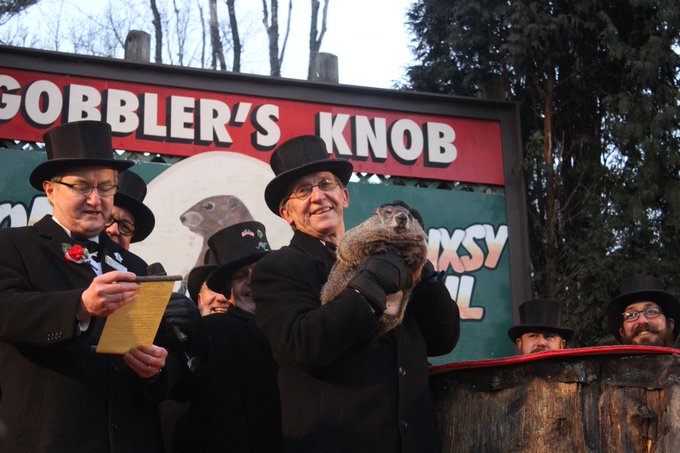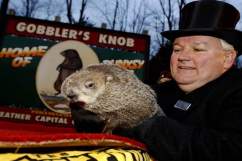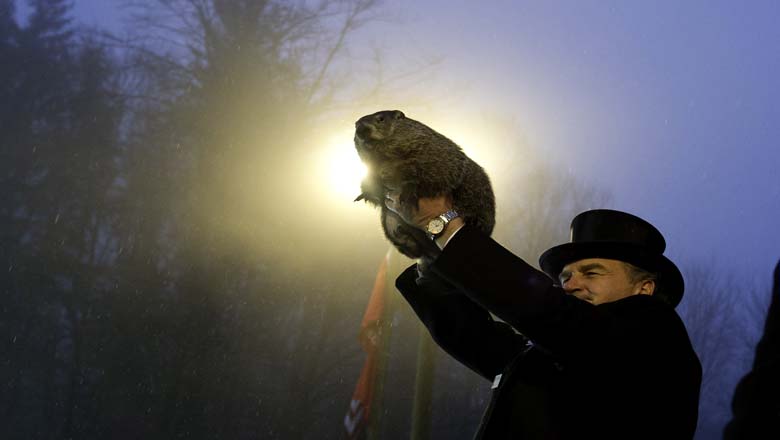
Groundhog handler John Griffiths holds Punxsutawney Phil after he saw his shadow predicting six more weeks of winter during 128th annual Groundhog Day festivities on February 2, 2014 in Punxsutawney, Pennsylvania. (Jeff Swensen/Getty Images)
Groundhog Day is an annual holiday in the United States celebrated every February 2.
It was officially established in 1887 by the Punxsutawney Groundhog Club who have monitored the event every year since. “Punxsutawney Phil” has been the name of the resident groundhog for the club since its inception, and they jokingly claim there has only ever been one Punxsutawney Phil.
According to the legend, if it’s cloudy when Punxsutawney Phil emerges from his burrow on this day, then spring will come early; if it’s sunny, the groundhog will get scared by its shadow and run back into its burrow, bringing on six more weeks of winter.
So cloudy good, sunny bad.
Read on to find out the unique history of the all-American tradition called “Groundhog Day.”
1. It Came From a European Tradition Called ‘Candlemas’
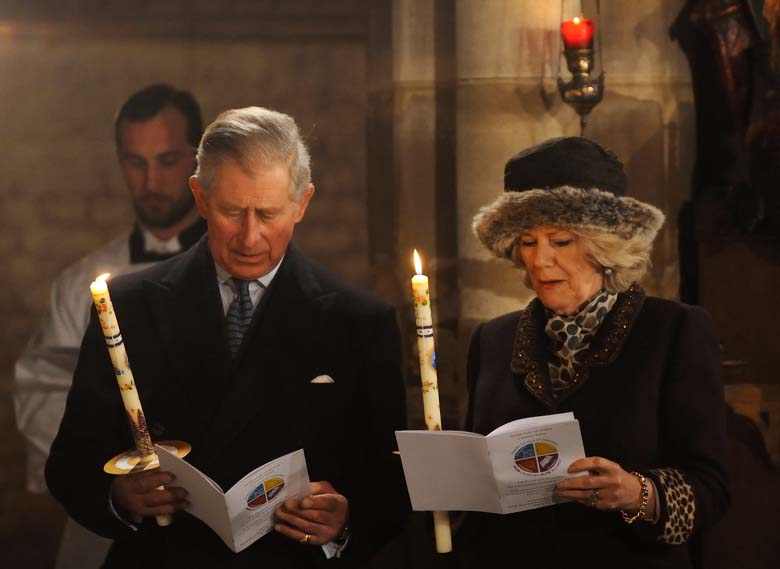
Prince Charles, Prince of Wales, and Camilla, Duchess of Cornwall, attend a Candlemas service at Saint Michael’s Church, Camden on February 2, 2012 in north London, England. (WPA Pool/Getty Images)
Before its association with Candlemas for early, Groundhog Day began as a pagan holiday. Called “Imbolc”, it was the seasonal turning point in the Celtic calendar. Imbolc was celebrated on February 1, and the main way to celebrate Imbolc was with weather prognostication. Prognostication is “the action of foretelling or prophesying future events.”
Ancient Celts weather prognosticated with badgers or a sacred bear. Groundhogs, also known as woodchucks or marmots, are native only to North America.
Imbolc eventually came to be known as Saint Brigid’s Day when Northern European peoples were christianized. Saint Brigid’s Day also happened to be around the same day on the Christian calendar as the Presentation of Jesus at the Temple, known as “Candlemas.” Candlemas is, according to tradition, the day Mary and Joseph took the baby Jesus to the Temple in Jerusalem forty days after his birth.
22 When the time came for the purification rites required by the Law of Moses, Joseph and Mary took him to Jerusalem to present him to the Lord 23 (as it is written in the Law of the Lord, “Every firstborn male is to be consecrated to the Lord”, 24 and to offer a sacrifice in keeping with what is said in the Law of the Lord: “a pair of doves or two young pigeons.
A practice from the celebration of the Presentation of Jesus at the Temple grew where priests would bless twelve beeswax candles to be used throughout the next year.
This came from another pagan custom. According to Pope Innocent XII:
Why do we in this feast carry candles? Because the Gentiles dedicated the month of February to the infernal gods, and as at the beginning of it Pluto stole Proserpine, and her mother Ceres sought her in the night with lighted candles, so they, at the beginning of the month, walked about the city with lighted candles. Because the holy fathers could not extirpate the custom, they ordained that Christians should carry about candles in honor of the Blessed Virgin; and thus what was done before in the honor of Ceres is now done in honor of the Blessed Virgin.
These customs and beliefs were then brought to Pennsylvania by German immigrants.
2. It’s First American Mention was in 1841
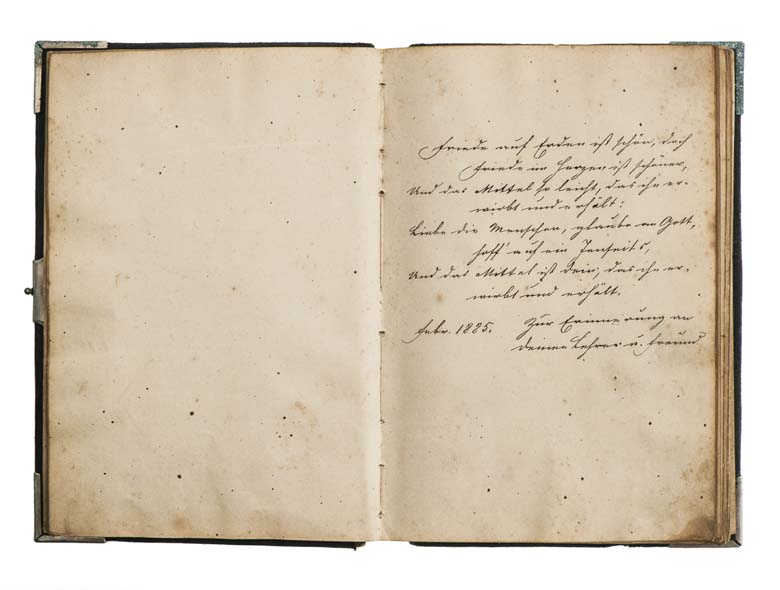
(Getty)
The first written record of weather prognostication associated with groundhogs is from dated February 4, 1841 where James Morris, a storekeeper from Morgantown, Pennsylvania, wrote:
Last Tuesday, the 2nd, was Candlemas day, the day on which, according to the Germans, the Groundhog peeps out of his winter quarters and if he sees his shadow he pops back for another six weeks nap, but if the day be cloudy he remains out, as the weather is to be moderate.
Celebrations of the eventual day to be called “Groundhog Day” spread throughout Pennsylvania, particularly in traditionally German areas like Lancaster County and Jefferson County.
3. It’s First Modern Celebration was on February 2, 1887
The largest Groundhog Day celebration is in Punxsutawney, Pennsylvania.
Punxsutawney is home to the Punxsutawney Groundhog Club, the organization we associate with Groundhog Day due to their iconic tradition of getting dressed up in suits and tails for the annual prediction. Its first celebration was on February 2, 1887 on Gobbler’s Knob, a hill in the city where the prognostication has taken place every year since.
Early on it was just a small ceremony in Punxsutawney attended by locals. Now the prognosticating of their mascot, Punxsutawney Phil, is broadcast all over the world.
4. Groundhog Day Inspired a Movie

(Imgur)
The oddness of Groundhog Day inspired the iconic comedy film directed by Harold Ramis and starring Bill Murray.
A weather man is reluctantly sent to cover a story about a weather forecasting “rat” (as he calls it). This is his fourth year on the story, and he makes no effort to hide his frustration. On awaking the ‘following’ day he discovers that it’s Groundhog Day again, and again, and again. First he uses this to his advantage, then comes the realisation that he is doomed to spend the rest of eternity in the same place, seeing the same people do the same thing EVERY day.
Because of how iconic the film became and its title and subject manner, “Groundhog Day” entered vocabulary as a reference to a bad situation that continually repeats, or seems to, over and over again.
5. Punxsutawney Phil Will Prognosticate by 8 AM
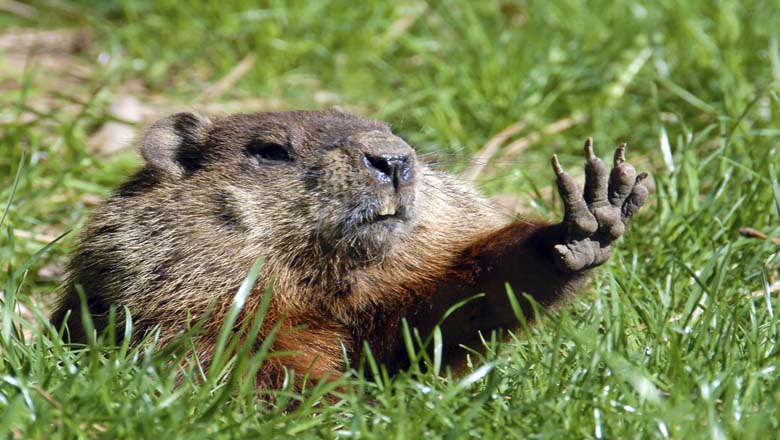
(Getty)
Punxsutawney Phil prognosticated today and he didn’t see his shadow, meaning an early spring.


